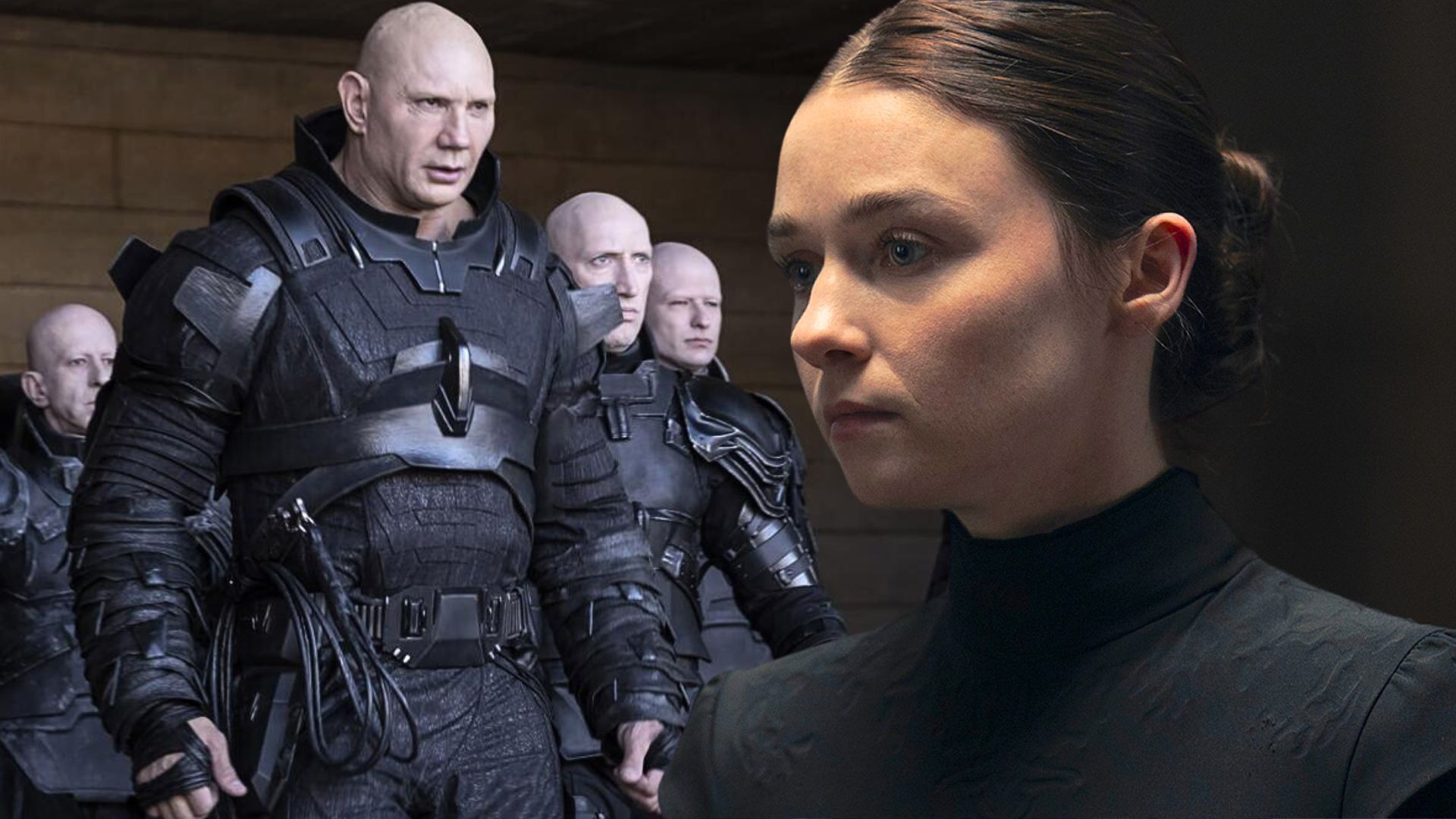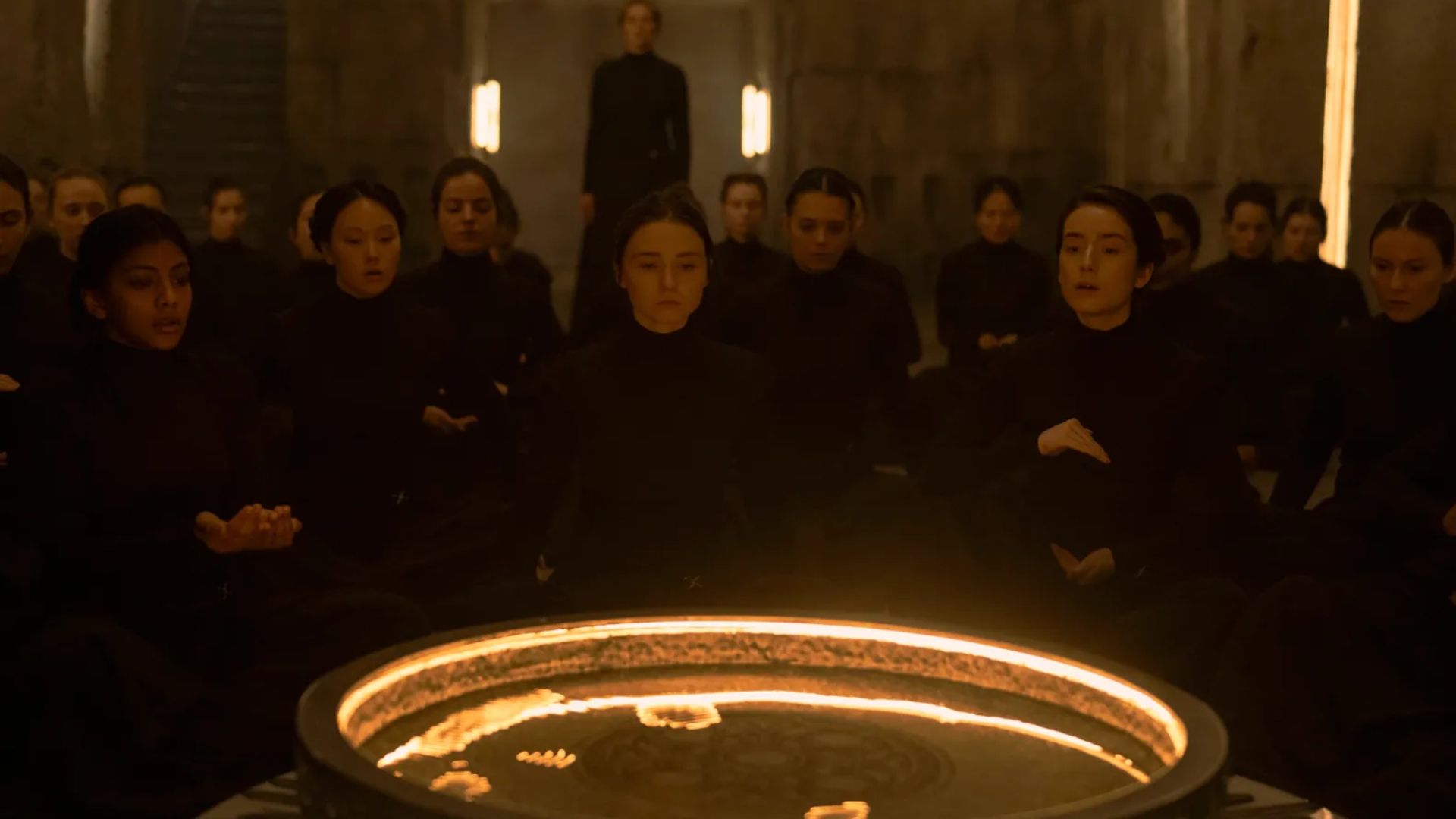Spoiler Alert: Spoilers follow for the pilot of Dune: ProphecyWhether in film or on television, all roads lead back to the desert. Denis Villeneuve’s Dune movies have seen phenomenal success for taking complex lore that many once considered unadaptable, and translating it to a visual medium with relative ease. Considering how dense Frank Herbert’s novels get with their worldbuilding (particularly in the sequels), it’s no small accomplishment what Villeneuve and company have managed to pull off. The fact that fanboys are actively eager to see more of this world might be the clearest sign of their success.
With Max’s Dune: Prophecy having just recently premiered, it’s clear that book purists are getting their wish, as the series is loosely based off of Brian Herbert’s 2012 sequel novel, Sisterhood of Dune. That novel chronicles the rise of the mysterious Bene Gesserit, a powerful religious sisterhood working to manipulate humanity onto a predetermined path of their own choosing. However, if the premiere episode is any indication, it’s clear that the series intends to explore several other key events in the Dune universe, one of which saw no mention in the films.
What Was the Butlerian Jihad?
The first Dune novel briefly alluded to a historical event that author Frank Herbert dubbed the “Butlerian Jihad”. The book’s appendix detailed the Jihad as a “crusade against computers and thinking machines,” resulting in the outlawing of creating machines “in the likeness of a human mind.” But even though Herbert referred to the Jihad repeatedly throughout his original installment, he never explored the core cause of the conflict, instead leaving it up to readers’ imaginations.
After Herbert died in 1986, his son Brian took over the reins of the franchise, and he launched a prequel trilogy, Legends of Dune, which explicitly depicted the unfolding of the Jihad. In his presentation, the conflict is presented as a sort of Terminator scenario, a war between humans and their technological creations that grew beyond their control. Brian Herbert depicted the Jihad’s root cause in the fact that humans had grown increasingly subservient to technology, to the point where the machines eventually enslaved them, forcing them to fight back.
Even though the Butlerian Jihad takes place over ten thousand years before the events of the first Dune, its effects are still felt in the world Paul Atreides inhabits. Most notably, the character of Thufir Hawat, played in the first film by Stephen McKinley Henderson, has the job of a “mentat,” or a human trained to think like a computer. Since the aftermath of the Jihad had explicitly banned the creation of sentient machines, mentats were intended as a replacement, unparalleled in their capacity to process memory, history, and logic.
The event also functioned as another illustration of Frank Herbert’s main thematic preoccupation with Dune: the dangers of putting blind faith in a “hero.” This example plays out a bit more traditionally than Dune: Part Two’s devastating climax, as almost all science-fiction fans are well-versed with plots about machines rising up against humans. Nonetheless, the underlying conflicts behind these two plotlines provide fascinating contrasts in Herbert’s examination of hero worship.

Related
Why the Harkonnens Look So Different in ‘Dune: Prophecy’
The Harkonnens in the Dune movies are alarmingly pale, bald creatures, so what’s going on with the decidedly normal looking ones in Dune: Prophecy.
How Does the Butlerian Jihad Inform ‘Dune: Prophecy’?
Dune: Prophecy begins long after the Butlerian Jihad unfolded, but its effects are still deeply felt in the world we see. Specifically, the conflict’s aftermath plays a key part in the rise of the Bene Gesserit. As explained by showrunner Alison Schapker to Entertainment Weekly, “The Bene Gesserit are one of multiple organizations and institutions that are ascending to fill the power vacuum that’s been left by machine technology being destroyed.” Of course, the other institutions to rise up include the Mentat and the Spacing Guild, so one can argue that the Butlerian Jihad paved the way for virtually every significant event throughout all the Dune franchise.
Dune: Prophecy insinuates that the conflict also indirectly caused the rivalry between House Atreides and the Harkonnens. Voiceover narration in the pilot reveals that a key Harkonnen figure abandoned his post during the war, forcing House Atreides to lead the charge to victory. And it’s this stigma that ultimately convinces series protagonist Valya Harkonnen (Emily Watson) to join the Bene Gesserit, as she believes wielding a position of such power will allow her to avenge the wrongdoing done to her house.
The episode’s climax also illustrates how widespread the fear of thinking machines has spread across the galaxy, as we see the Emperor’s daughter, Princess Ynez Corrino (Sarah-Sofie Boussnina), get engaged to the young Pruwet Richese. In one scene, he displays sympathy towards thinking machines, talking about how his father believes others’ fears of them are unfounded, and that society can still find a use for them. Later, during the ceremony, Pruwet pulls out a mechanical toy, sending the entire room into a state of panic. Ynez even threatens to call off the marriage if she catches him playing with it again.
Shortly after this, mysterious soldier Desmond Hart (Travis Fimmel) privately meets with Pruwet and uses his mind to burn him alive. We don’t yet know much about Desmond as a character, or if his reasons for killing Pruwet had anything to do with his sympathies towards thinking machines. It doesn’t seem entirely out of the question, however, considering he was the one who destroyed the toy.

Related
‘Dune: Prophecy’ Is Nothing Like the Movies, and That’s a Good Thing
The ‘Dune’ spin-off series drew inspiration from ‘Game of Thrones’ to expand its universe.
‘Dune: Prophecy’ Lives in the Shadow of the Butlerian Jihad
It’s very possible that the pilot will be the last time we see anything having to do with the Butlerian Jihad and its aftermath, and it could turn out that Desmond’s actions are related to something else entirely. Nonetheless, the pilot of Dune: Prophecy effectively establishes a world in transition, still scarred by the aftermath of the Butlerian Jihad, and dominated by various factions trying to step into the power vacuum and assert dominance.
Alas, as per Frank Herbert’s tradition, the true tragedy is that the Bene Gesserit effectively comes to fulfill the same role that the machines once did: to give individuals a “hero” to blindly worship at the cost of individuality. Dune: Prophecy is now streaming on Max, with new episodes every Sunday.
Source link


















Add Comment